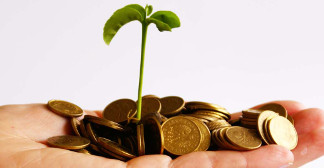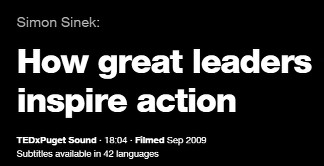Designing the Sustaining Organisation
Making new assumptions
As human beings, what we see is in many ways a result of what we are looking. As Henry Ford said:
“If you think you can or you think you can’t – you’re right”.
If we assume that green business is a fad, that our Environmental Management System is an overhead and that being sustainable is expensive and unprofitable, then that’s the result that we’ll see.
If EMS and OHS issues are only seen as overheads then the opportunities they bring will be missed. More and more evidence is accumulating that shows that “green is good for business”.
Global warming and climate change – the opportunities
 The evidence is increasing on climate change, but many people are still sitting on the fence. But is it really a question of whether you are convinced? What if a majority of the world is convinced?
The evidence is increasing on climate change, but many people are still sitting on the fence. But is it really a question of whether you are convinced? What if a majority of the world is convinced?
This is the year that Kyoto was signed. Businesses, governments and consumers are getting more and more concerned about and interested in the issues. Are you watching out for your opportunities?
Approaches to sustainability
In “Organisational Change for Corporate Sustainability”*, the authors define the steps through which an organisation evolves through in the way it relates to the human and natural resources it employs. These phases are:
1. Rejection
2. Non-responsiveness
3. Compliance
4. Efficiency
5. Strategic proactivity
6. The sustaining organisation
Where is your business on this scale? Is this where you want to stay for the first decade of the 21st century?
Sustaining organisations
Sustaining organisations are ones that actively promote environmental and social sustainability practices in their industry and in society generally. In other words, these are businesses that have taken on the challenge of “doing well BY doing good”.
Designing the sustaining organisation
Sustaining organisations don’t occur by chance – they are the result of strong commitment from their leaders and consistent, focused actions by them and their teams.
This isn’t a magic wand – sustaining businesses are still in business, and still experience all the turbulence and challenges of the business environment. Because they require planning and creativity and optimism, they are often stronger. They keep good staff for long periods and have more fun, so they last longer and change shape. “Built to Last”**
researched those strengths back in 1994.
Positive design
Sustaining businesses work towards a result where all their products, services and processes having positive effects on the world around them. Their goals might include:
- Zero greenhouse gas emissions
- Zero waste to landfill
- Community involvement
- Diversity in employment
- Fully sustainable buildings which provide ALL their own energy and water AND produce no waste.
- Products that are totally safe to make and use.
Their design question is “How can we only have positive results?” instead of “How can we do less damage?”
Strategic planning
Working as a leadership coach, the early discussions with my clients are around “Where do you want to be in 5-10 years time?” What they want THEN is the starting point for moving forward. As a business working towards being a sustaining organization, strategic planning is around “How can you be sustainable in 10 years time?” Then we can work back to now.
The biggest opportunities need the most planning, so integrating sustainability into an overall business development program is a more effective starting point than “Where can we spare some time to be ‘green’?” (It’s also a lot more fun and much more
empowering.)
*Dunphy, Griffiths & Benn. Orgainisational Change for Corporate Sustainability. 2003, Routledge, London.
**Collins & Porras. Built to Last (3rd Ed). 2000, Random House, London.
(Originally published in Balance3 Update, 2005)



